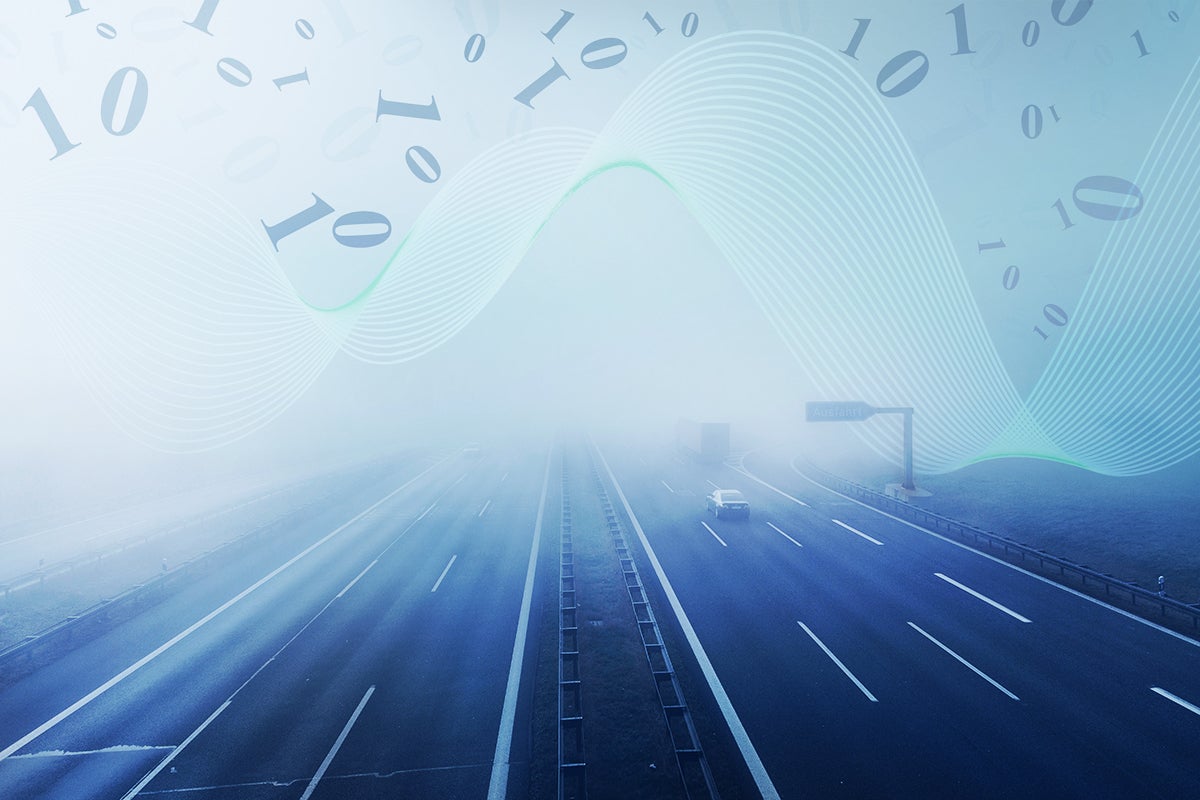Despite all the banter about the ‘future of work’ no one is talking about what that really means. Our inability to see through our present reality has limited and tainted our discussions about how work will fundamentally transform over the next couple of decades. It’s time for that to change.
I remember walking through the turnstile at Disneyland as a kid. The moment we were actually in the park, I knew exactly where I was headed.
Like any Southern California native, I had a laundry list of my favorite spots at The Happiest Place on Earth. But at the top of that list — and the place I ran toward the moment I crossed that threshold — was Tomorrowland.
As a kid, stepping foot into Tomorrowland felt as if I was actually traveling to the future. It was full of new ideas about far off worlds, new inventions — or as Disney called them, Innoventions — and glimpses of what our future might hold.
There was one place, however, that held my imagination more than any other — and which represents the true essence of Tomorrowland.
But we’ll get to that in a moment.
In truth, of course, most of that stuff was about as far off-base as we could get. The problem with imagining the future, it turns out, is that we are always captive to our present reality.
This trap is why if you go back and watch any of those videos about the future from the 1950s, you’ll see a whole lot of futuristic ways of doing the same things — but no mention of the Internet, smartphones or any of the things that redefined today’s futuristic reality.
This inability to envision a future that looks drastically unlike our current reality is the same reason that most enterprise leaders (and just about everyone else) are missing one of the most significant changes that will affect nearly everything: the future of work.
This statement may seem ridiculous because, of course, everyone seems to be talking about the future of work these days. It is one of the elite buzzwords of our time.
The problem is that almost no one is really talking about the changing nature of work. Like those 1950’s visions, our present reality — and our inability to see through it — has limited and tainted our discussions about how work will fundamentally transform over the next couple of decades.
It’s time for that to change.
Looking to the past to find our future
If we’re going to take an honest look at how the nature of work will transform as we enter a post-industrial age — what I call the digital era — we need to start by accepting that this will not be a nominal, incremental change.
In his book, The War on Normal People: The Truth About America’s Disappearing Jobs and Why Universal Basic Income Is Our Future, Andrew Yang paints a bleak picture of the impact that technology is having — and will have — on jobs and the nature of work. While I do not share his stark view of where this all leads, I believe his analysis about the fundamental impact that automation and technology will have on work and jobs is dead on.
Yang writes: “A wave of automation and job loss is no longer a dystopian vision of the future—it’s well under way. The numbers have been telling a story for a while now that we have been ignoring. More and more people of prime working age have been dropping out of the workforce. There’s a growing mass of the permanently displaced. Automation is accelerating to a point where it will soon threaten our social fabric and way of life.”
I would argue, in fact, that we need to go back to the dawn of the industrial age to find the type of wholesale transformation of work that is now underway. We must, therefore, look to this past if we want to understand how work may change in our digital era future.
Agriculture and craftsmanship were the driving forces of the pre-industrial world of the 17th and early 18th centuries. Like today, automation in the early days of the industrial revolution caused waves upon waves of disruption to long-standing forms of both business and work itself and set forces in motion that have defined modern society ever since.
The rise of new machines enabled us to automate what were once arduous and time-consuming manual tasks. Ostensibly, as technology automated these agricultural and craftsman-type jobs, they were replaced by new jobs in the new industrial economy. This evolution of work was, of course, correct in the long run, but only after decades or centuries of upheaval.
“The aftermath of the Industrial Revolution involved two major Communist revolutions, whose death toll approaches 100 million,” writes Professor Moshe Y. Vardi of Rice University. “The stabilizing influence of the modern social welfare state emerged only after World War II, nearly 200 years on from the 18th-century beginnings of the Industrial Revolution.”
The point that both Yang and Vardi make is that regardless of how this sorts out in the end, the intervening period of transition is going to be rocky for many of us. Most importantly, just as in the transition to the industrial age, after all of the upheaval and eventual stabilization (hopefully), the nature of work will look starkly different than it does now as this process begins.
If we can reduce it to an algorithm…
In the midst of all the excitement over self-driving cars, consumer robots, and digital assistants like Alexa and Siri, most people have missed the more significant and less sexy story of artificial intelligence (AI) unfolding within the enterprise.
While the attention-grabbing technologies get all the press, it is the mundane applications of AI that are slowly remaking the nature of work in organizations. And things are only now beginning to pick up steam.
Just like at the dawn of the industrial age, organizations are in a mad dash to leverage technology to automate the arduous and time-consuming manual tasks that consume vast amounts of enterprise resources.
Entire classes of machine learning and AI-powered technologies such as Robotic Process Automation (RPA), Digital Process Automation (DPA), business process mining, and a new generation of so-called low-code and no-code development platforms, have risen to help organizations automate vast chunks of these once manual activities.
More significantly, the evolution of cognitive platforms and the integration of AI-powered predictive and automation capabilities into business management platforms such as SAP, Oracle, Microsoft, and Salesforce are laying the foundation for much more fundamental change. The AI-infusion of these core systems, which already house vast swaths of enterprise business processes and their associated data, have set in motion the wholesale collection of the proprietary knowledge that is the foundation of an enterprise’s competitive value.
The inevitable next step — something that is already happening — is the augmentation and eventual automation of corporate decision making based on this proprietary knowledge. Cognitive platforms are at the forefront of this type of contextual, knowledge management automation — but they are just the leaders in a rapidly developing market full of some of the brightest, most progressive minds in technology.
While every company that is developing AI-based technologies today will tell you that their goal is to augment human capabilities rather than replace workers, the reality is that this story is leading to an inevitable conclusion.
While it may not be politically correct (or good for sales) to acknowledge it openly today, the writing is on the wall: if we can reduce something to an algorithm, we will automate it in the very near future.
“Regardless of how we describe the present, be it the digital epoch, the Fourth Industrial Revolution era, or the ‘second machine age’, what it boils down to is that all work that requires supervision is being outsourced to robots and algorithms,” explains Andrew Chakhoyan writing for the World Economic Forum. “Non-standard, creative, experimental work, on the other hand, doesn’t naturally lend itself to management.”
Yes, there will always be a need for human discernment — and, at least culturally, it’s going to be a long time before we trust computers to make some of the most important decisions — but for the vast majority of both knowledge and unskilled workers alike, the automation of immense chunks of current job functions is a near-term reality.
It is this reality that will reshape the nature of work in the digital era — and it is a reshaped future for which most organizations are ill-prepared.
The digital experience at the center of work in the digital era
There is another side to the story of algorithmic automation: what we can automate we also commoditize.
As organizations automate everything they can reduce to an algorithm, they will be impacting more than just jobs. The very nature of how organizations create competitive, differentiating value in the market will shift.
We saw the same thing play out at the dawn of the industrial age. As organizations were able to automate the production of goods that had previously required a craftsman’s skills, they were at the same time commoditizing those skills and the differentiating value they had delivered.
As a result, merely being able to create a good was no longer differentiating and organizations had to seek out other ways of creating value. For the most part, this value creation came in the form of optimization — it was all about producing a mass product for a mass market as efficiently as possible.
In much the same way, as organizations automate vast swaths of their knowledge and production work, they will also commoditize those things and the value those activities created.
It is no longer enough to deliver a quality product inexpensively to the market. As we are already seeing play out across industries, the differentiating value is shifting to the experience — and mostly, the digital or digitally-enabled experience.
Creating, curating, and sustaining digital experiences which enable an organization to stand-out in the market will be the essential driver of competitive differentiation and business value in the digital era. This shift will also drive the transformation and reinvention of work.
Just as almost all jobs and different forms of work during the industrial age radiated out of an organization’s need to optimize their supply chains and improve organizational efficiency — in the digital era, all forms of work will radiate out of the need to optimize the digital experience.
Author and futurist Brian Solis recently examined this shift. “[Customer experience] is an opportunity to design, improve and integrate real-world experiences that the customer is going to have. In the process, businesses will have to re-align models and processes to unite disparate groups into one congruent effort. This will help companies compete in an era where customers are taking control of their experiences.”
This realignment may seem innocuous on the surface, but this shift in focus will cause organizations to reorient virtually every element of how work is done, including their hierarchical structures, management models, and employee performance management and compensation strategies.
While it will be necessary for organizations to maintain the optimization and efficiency gains they made during the industrial age, these will now be the price of admission. The winners in the digital era will be those who can consistently deliver the best experiences — and who have reshaped how they work to do so.
The transformation is underway
I almost didn’t write this article.
After all, I and many others have been talking about digital transformation and the future of work for several years now.
But as I have been doing research for my new book, I realized just how much of the coverage on this vital subject is focused on the wrong things.
The danger of any buzzword is that it masks the real significance of what it represents. That risk is now coming to a head because I believe this is the year these fundamental transitions in the nature of work will begin in earnest.
The confluence of both rapidly evolving technologies and ever-growing customer (not to mention employee and partner) expectations will lead to rapid shifts in how leading organizations structure and manage themselves. It represents a generational opportunity for those organizations that lead the way — and a warning for everyone else.
Underpinning this transition will be the transformation of work, the key enabler of which will not be technology, but imagination.
As I stood at the entrance to Tomorrowland with my brother and cousins all those years ago it was always the same question: How many times would we ride Space Mountain today?
More than any other part of Tomorrowland, Space Mountain transported you into a world of possibilities — a world that did not yet exist.
The ride was less about presenting a future that would be, and more about offering an opportunity to immerse yourself in future possibilities.
We have all now reached the front of the line. It’s time to cast aside the trappings of our current reality and boldly imagine our new future — one that looks very different than the world we currently inhabit.
And like that first turn at the beginning of Space Mountain, reimagining the future of work in the digital era will be a little bit scary — but it will also be thrilling as we brace ourselves for what we know is going to be an amazing ride.
Tag/s:Business TransformationDigital EraFuture of WorkPersonal Development





